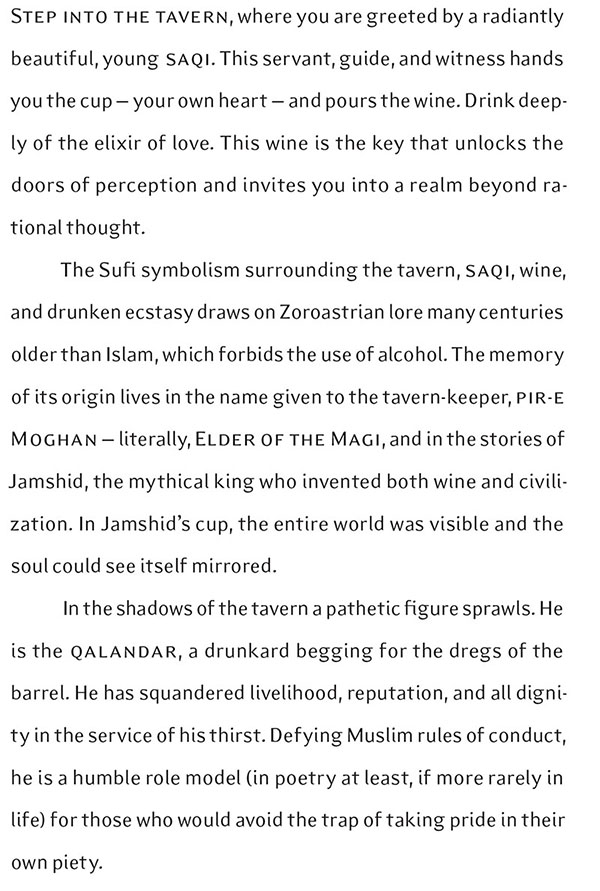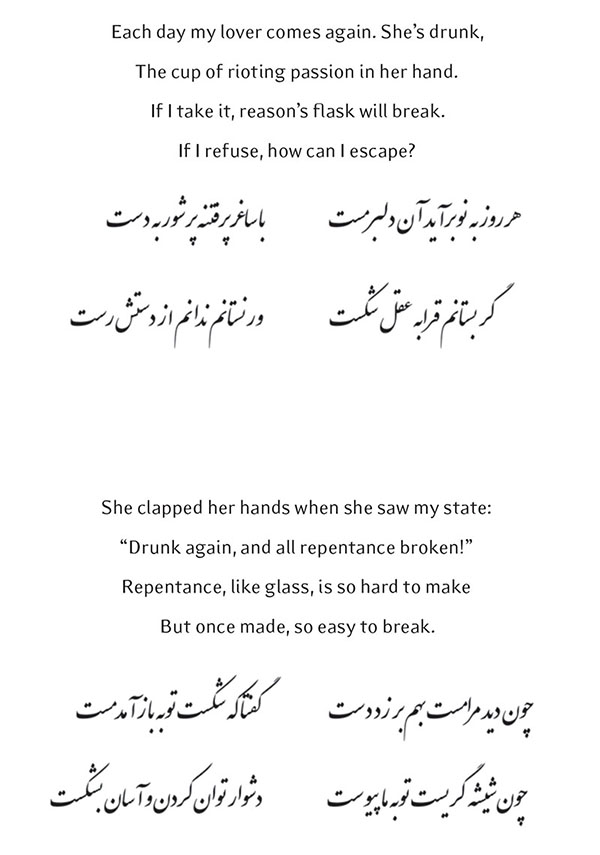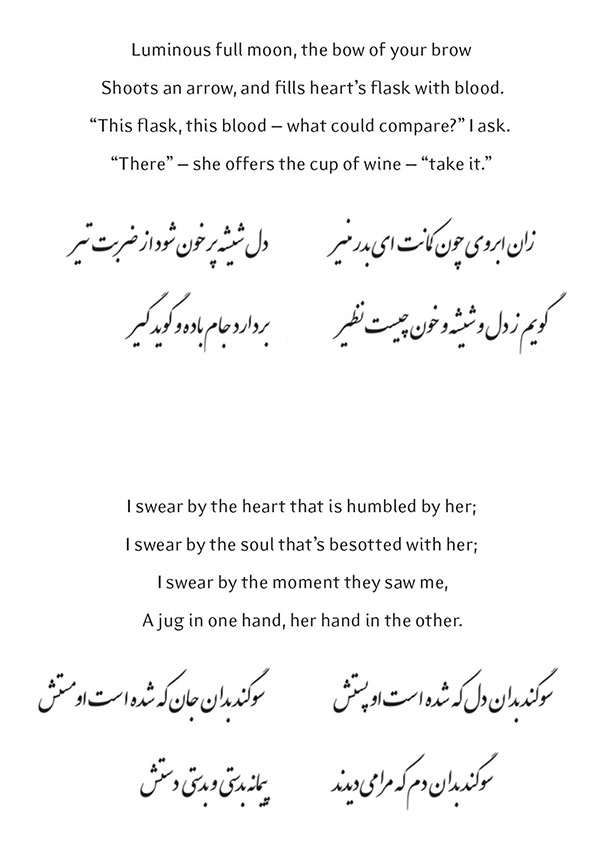Writer, editor and literary translator Zara Houshmand shares a selection from her recent translations of Rumi in Moon and Sun.

The rubaiyat, or quatrains, in Moon and Sun were composed by Jalal al-Din Mohammad Balkhi, known as Rumi, a 13th century Muslim theologian and Sufi mystic, and one of the greatest poets of the Persian language. They are a selection from almost 2,000 such quatrains that, along with many longer ghazals, comprise the Divan-E-Shams. These poems poured out during a period of Rumi’s life when he was intensely affected by his relationship with his spiritual mentor and soulmate, Shams al-Din Tabrizi.
Legend describes Shams — whose name means “sun” — as a wandering dervish, unschooled, an ugly man but charismatic. His own words, only recently made accessible in English, present a much subtler picture. He was an accomplished scholar who hid his learning, an iconoclast, and a fearsome enemy of all hypocrisy. He traveled widely in search of great spiritual teachers of his time, but kept his distance from the dervish schools that would normally have accommodated such a traveler. He refused to beg, and instead earned a meager living at temporary jobs as he traveled.
His relationship with Rumi also defied categories, blurring the traditional roles of master and disciple. Rumi held the belief that at any one time, a single saint living in the world serves as an axis mundi, a center around which all spiritual energy revolves. He believed that in Shams he had found this saint. It is clear from Sham’s own teachings that he likewise saw Rumi as a saint, though one who had something to learn from him.
The synergy of their friendship was a mutually fueled fire of the spirit.
(Excerpted from the Introduction to Moon and Sun, A Selection of the Rubaiyat of Molana Jalal Al-Din, Rumi.)

















The book is available for purchase here: https://zarahoushmand.com/moon-and-sun/
Wow, this article really helped me understand the beautiful relationship between the Moon and Sun – so fascinating!